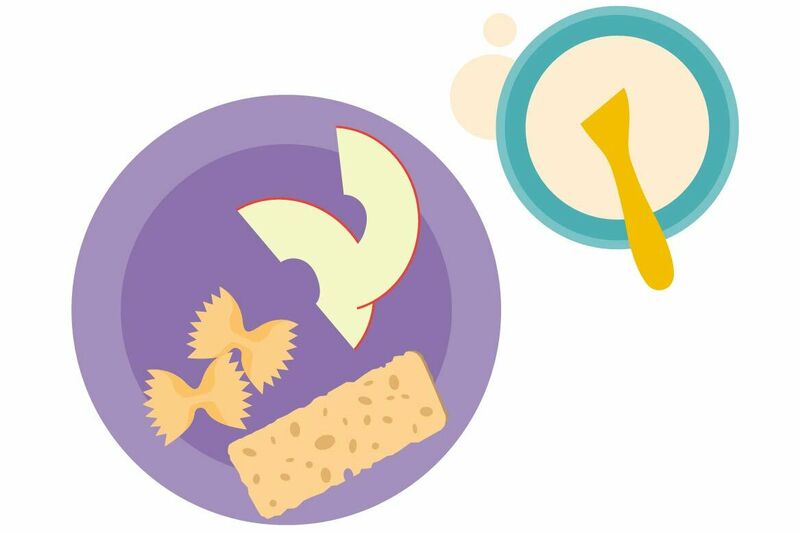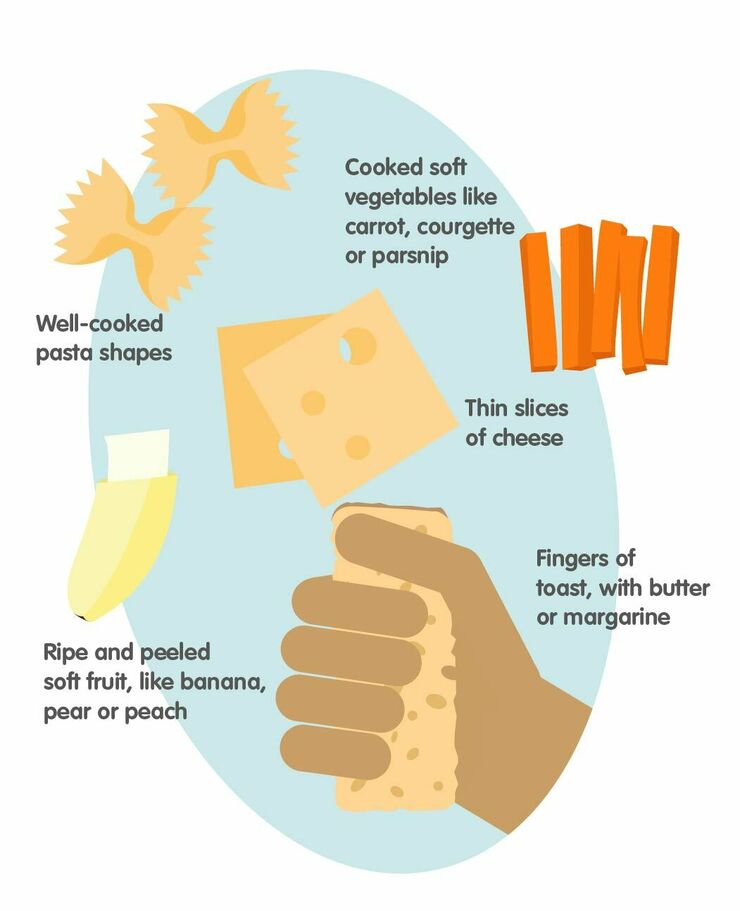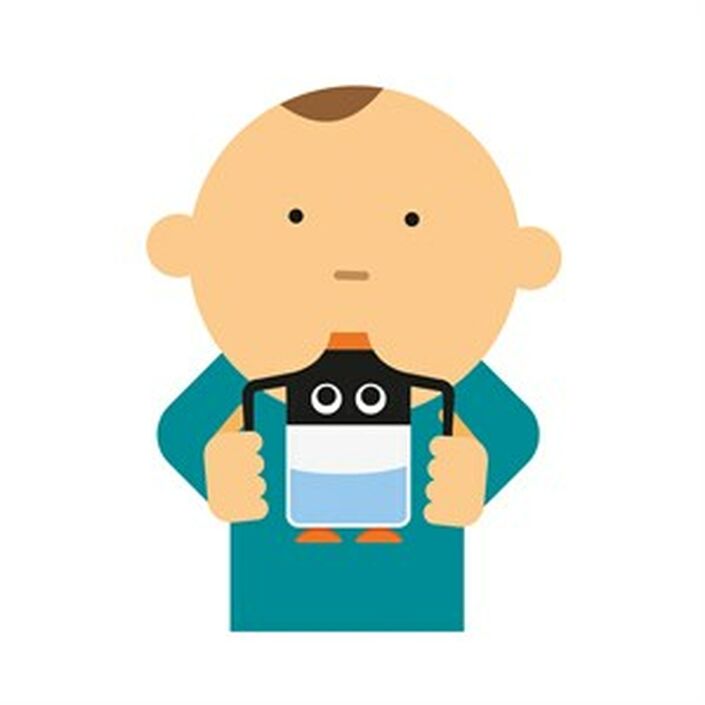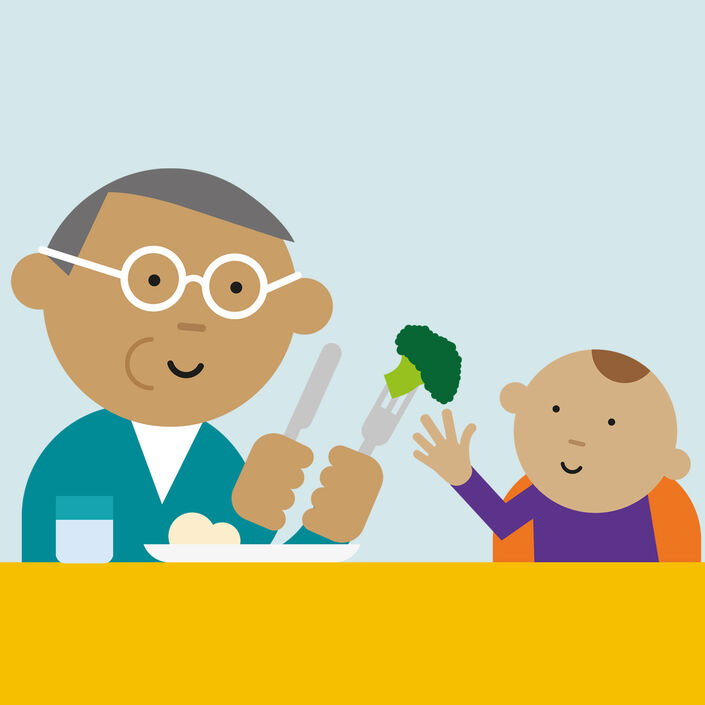Some ideas for finger foods
- Ripe and peeled soft fruit, like banana, pear or peach.
- Cooked soft vegetables, like carrot, courgette, parsnip or sweet potato.
- Well-cooked shredded meat or flaked fish, with all the bones removed.
- Fingers of toast, pitta bread or chapatti, with butter or other similar spread*
- Well-cooked pasta shapes.
- Pieces of falafel or garlic bread**.
- Cheese, either in thin slices or grated**.
- You can find more ideas on the NHS Start for Life website and and in Eating well: the first year from First Steps Nutrition Trust (PDF).
*This can help your baby swallow these foods more easily but you don’t have to add much - and you can give them dry once your baby is more skilled at eating.
**Some of these foods can contain a lot of salt, so don’t give them too often. Also, remember to avoid adding salt to any cooking water.
Gagging is a reflex which helps to stop food getting into the airway, or big lumps being swallowed before they’ve been chewed. It’s very likely your baby will gag many times while they are learning to eat solid food. Choking is much more serious - but it’s also very rare.
Gagging
Gagging in babies is triggered when food touches the middle of their tongue. It can look as if your baby is spitting out foods - but it's not because they don’t like the food, it's because of an automatic gag response.
Gagging happens more often when babies begin to eat lumpier food: at first, they may suck the food, meaning that a lump gets to their throat before being chewed. They will then gag to bring it back into their mouth.
As they grow older, they will develop the skills to move food around their mouth and to chew lumpy food to a size they can manage. This skill helps reduce the gag reflex.
It’s a good idea not to leave it too late to introduce lumpy foods as it may take longer for your baby to learn how to manage them.
The NHS Start 4 Life website has more information about gagging, including a useful video on what gagging looks and sounds like.
When your baby gags on their food, try not to panic. They may react to your panicking and become upset. Gently reassuring them while they work it out for themselves is the best way to help them learn how to manage lumps.
Foods that are a mixture of liquid and lumps (e.g., firm cereals with milk) may be more challenging to start with. They can lead to more gagging, as your baby may find them harder to chew or control in their mouth.
If your baby gags a lot on these foods, leave them for a couple of weeks then try them again.
Choking
Choking is different from gagging; it is what happens when an object gets lodged in the airway, blocking the flow of air. It happens rarely but it needs swift action.
The NHS Start 4 Life website has more information about choking.
You can reduce the risk of choking by avoiding hard foods and making sure small round foods (such as peas, sweetcorn, and blueberries) are squashed or mashed.
Remember: Make sure you always stay with your baby and keep watching them while they are eating.



